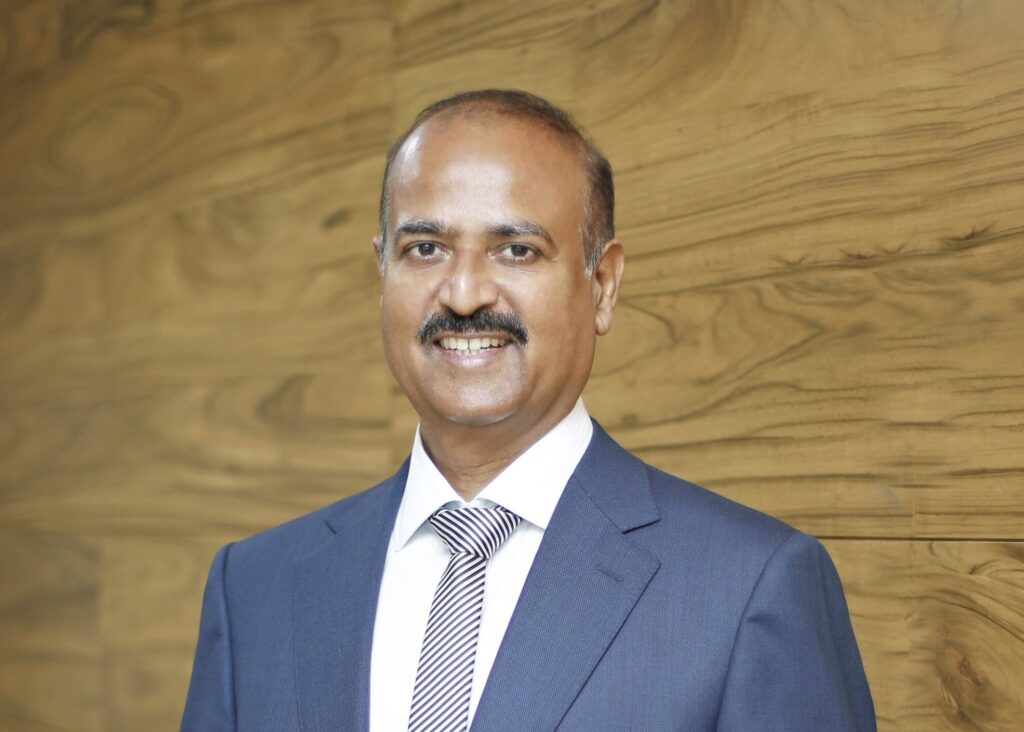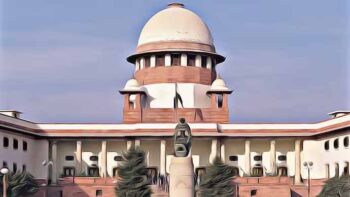Criticism vs. Reality: The True Value of Insurance

Insurance—the industry that has safeguarded millions of citizens and many businesses, often faces situations that cast a shadow on its efforts. Recent media reports have once again opened a wave of criticism. This raises a pertinent question: Has sensationalism overtaken reason? While much has been said about these reports, it is time to dwell deeper into the issue and look at the ground reality. Mr. Tapan Singhel, Chairman, General Insurance Council and MD & CEO, Bajaj Allianz General Insurance
The Unseen Good: A Silent Majority: As per the IRDAI annual report, last year, the General Insurance industry settled crores of claims worth ₹ 1.72 lakh crore, out of which it paid more than ₹ 80,000 crore towards health insurance. Yet those who benefit rarely make the news. On the flip side, isolated grievances and odd bad experiences become the face of the industry. Also, the claim settlement ratio in the industry is more than 80%. The 20% of claims that are rejected are on the account of fraud, or non-admissibility and yet there is an uproar about this. After all, insurance is public money, and insurers should be lauded for handling this money responsibly.
The Price of Safety: Let’s say it is not making a difference, and we decide to shut down the industry but without it what would happen?
- Some argue that individuals can self-insure by saving for medical expenses. However, consider this: out-of-pocket (OOP) health expenses in India currently stand at 60%, as per a report by NITI Aayog. Without insurance, this figure would soar to 100%, leaving households entirely at the mercy of skyrocketing medical costs. For families without significant savings, medical bills would push them below the poverty line. Currently, approximately 7% of India’s population—already face this reality annually due to healthcare costs. Without insurance, this number would worsen, and the government would face increased pressure to subsidise healthcare, diverting resources from other critical sectors. Such a scenario would derail our demographic dividend and exacerbate poverty. Are we ready with an alternate safety net for citizens if insurance shuts down?
- The motor industry, thriving thanks to insurance-backed accident protection, will falter as claims payouts—approximately ₹ 55 thousand crore—cease to exist. The motor industry thrives partly due to insurance-backed accident protection. Without insurance, the financial burden of accidents would fall entirely on vehicle owners, leading to increased economic instability and decreased vehicle sales. Insurers also play a crucial role in covering Motor Third Party claims, which is a mandatory requirement in our country. As per the recent IRDAI annual report, in FY 23-24, the industry paid claims amounting to over ₹ 27,000 crore in Motor TP claims. If the insurance industry were to close, who will bear this cost of compensation? It will further burden the government treasury of a fast developing nation.
- Nearly 36 crore beneficiaries have been verified under Ayushman Bharat Pradhan Mantri- Jan Arogya Yojana (AB PM-JAY) as of November 30, 2024. Further, 8.39 crore hospital admissions worth over ₹ 1.16 lakh crore have been authorised under the scheme. This scheme of the government provides health coverage of ₹ 5 lakh per family per year for secondary and tertiary care hospitalisation to approximately 55 crore beneficiaries, corresponding to 12.37 crore families constituting economically vulnerable bottom 40 percent of India’s population. Without the insurance industry’s support, the scheme would not be in place or effective in states adopting an insurance or hybrid model. The government would have to bear all this cost on its own. According to PIB, the health expenditure for 2023-24 is ₹ 5.85 lakh crores, which is 1.9% of the GDP. This is an increase from ₹ 2.43 lakh crores in 2017-18. A significant portion of this expenditure supports low-income families. Insurance-backed programs like Ayushman Bharat alleviate this financial strain, covering citizens across states and UTs. Without insurance, this burden will only grow.
- Natural disasters like floods, cyclones, and earthquakes wreak havoc on nations, causing immense human and financial losses. Insurance serves as a critical recovery mechanism. The staggering more than 90% protection gap between insured and actual losses underscores the urgent need to bridge the gap; cyclones, floods, and earthquakes are sadly becoming yearly affairs. In 2023 alone, India witnessed 17 natural calamities. Without insurance, economies would struggle to recover. Take the United States as an example: its robust insurance framework ensures that post-disaster regions come back stronger, bigger, and more resilient. The infusion of insured capital post-Hurricane Katrina enabled infrastructure rebuilding and economic recovery. In India, a higher insurance penetration could similarly transform recovery processes, ensuring affected communities rebound swiftly rather than languishing in prolonged despair. Here, it is also worth noticing that the Central Government has allocated ₹13,693 crore for the National Disaster Mitigation Fund (NDMF) and ₹32,030.60 crore for the State Disaster Mitigation Fund (SDMF) for the period 2021-22 to 2025-26. After each natural disaster, the government spends a huge amount as compensation. This money, which eventually goes from taxpayers, could be routed toward developmental projects and infrastructural development if a more robust insurance program is in place.
- Agriculture, the backbone of India’s economy, is vulnerable to the whims of nature. Thanks to the insurance industry, schemes like the Pradhan Mantri Fasal Bima Yojana (PMFBY) have disbursed claims worth ₹1.64 lakh crore over the past eight years. These pay-outs have offered financial respite to farmers, reducing distress and contributing to a decline in farmer suicides. By mitigating risks associated with droughts, floods, and unseasonal rains, insurance ensures farmers can continue contributing to the nation’s food security. Here, without insurance, there seems to be no effective safety net to ensure that the relief of loss reaches the last mile.
Insurance: An Industry with Remarkably Low Grievance Ratios: Despite common misconceptions, the insurance industry boasts impressively low grievance ratios, underscoring its robust complaint resolution mechanisms. Talking about the recent numbers, with just 94,843 grievances in FY 23-24 against 2.96 billion policies, the industry achieved a mere 0.003% grievance ratio—an achievement few industries can match.
Fighting Fraud: An Unsung Battle: Fraudulent claims cost the industry billions annually but no one speaks much about it. Over the past five years, the insurance industry detected approximately 3.01 lakh potential fraud cases involving a sum assured of ₹1.73 lakh crore. According to research, the Indian general insurance industry loses approximately US$6 billion to fraud annually, translating to roughly ₹ 30,000 crore. Yet, the narrative focuses solely on claim rejections, ignoring the root causes. Should fraudulent claims go unchecked? Shouldn’t there be stricter penalties for those exploiting the system? Allowing fraud to go unchecked undermines the trust and sustainability of the entire insurance framework.
The Profit Myth: The general perception is that insurers are generating huge profits and only exist to make a profit. First of all, is profit such a bad thing for an insurer? Profit ensures that insurers can honour future claims and remain sustainable. Underwriting profits showcase prudency.
Now, looking at the other side of the coin, the general insurance industry operates at an average claims ratio of more than 80% and a combined ratio of 115%, which means for every INR 100 earned in premiums, the industry pays out INR 115. Simply put, insurers lose money on claims payouts and operational expenses. Yet, every small price hike triggers public outcry. If so, let’s shut this “evil” industry!
An Industry run by citizens: Employing over a million people directly and 5 million indirectly, insurance supports countless livelihoods. It’s not about a profit-mongering evil industry but about citizens working to impact lives positively. Entrepreneurs like brokers, TPAs, and Insurtechs further add value, making it a cornerstone of economic and employment growth.
Moving the Needle: India’s insurance penetration remains abysmally low at 1%. The industry works tirelessly to increase awareness and expand coverage. However, criticism without constructive dialogue risks alienating stakeholders, jeopardising future progress and reducing trust. We need to understand that as the insurance penetration increases, the nation will develop faster; without it, we would probably go backwards!
Let’s not forget what insurance represents: a safety net, a fallback, and a protector of dreams. Is there a scope for improvement? Yes, but the industry is constantly evolving. The insurance industry welcomes scrutiny but demands fairness. Highlight the good, address the bad, and focus on the way forward. If you still think insurance is evil, let’s shut it down, provided we have an alternate safety net for our citizens. Till then, the choice is ours—criticise destructively or engage constructively.




